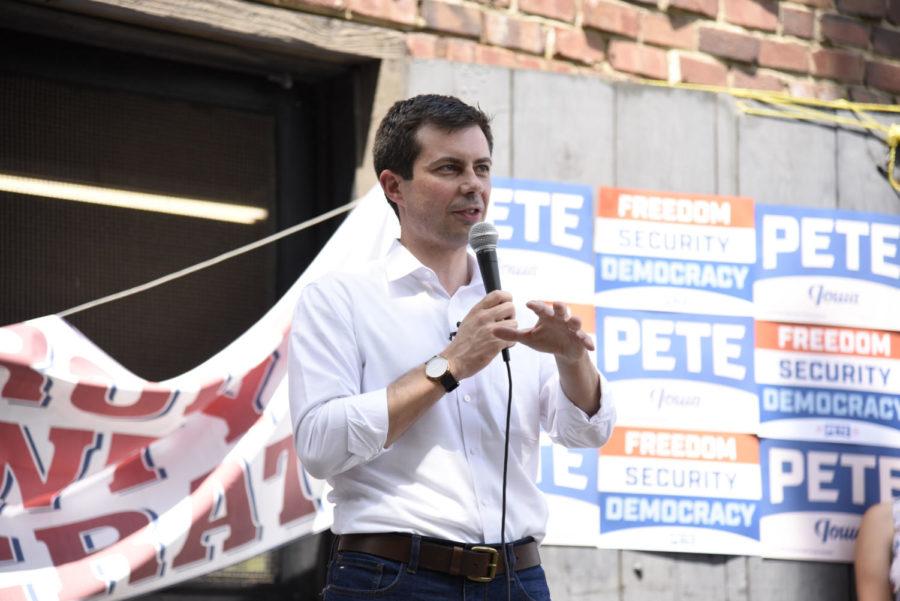Pete Buttigieg shows strength in Iowa
October 7, 2019
Pete Buttigieg is running an Iowa-focused presidential campaign, which is in line with previous dark horse candidates who staked their campaigns on the state. However, the South Bend, Ind., mayor is different from some past dark horses in one aspect — he’s doing well in Iowa.
Mack Shelley, Iowa State professor and chair of the political science department, said being from the Midwest “certainly helps” Buttigieg in Iowa.
Buttigieg is running digital ads in Iowa that open with a graphic saying, “Indiana Democrat Pete Buttigieg,” highlighting his midwestern roots.
South Bend only has a population of just over 100,000, but Buttigieg is polling better in Iowa than fellow presidential candidate Sen. Kamala Harris, D-Calif., who represents nearly 40 million people in the U.S. Senate.
The most recent Selzer Iowa poll for The Des Moines Register, CNN and Mediacom found Buttigieg in a close race for third place with Sen. Bernie Sanders, I-Vt., receiving nine percent to Sanders’ 11 percent among likely Democratic caucus-goers. They trail frontrunners Sen. Elizabeth Warren, D-Mass., and former Vice President Joe Biden, who have 22 and 20 percent support respectively.
Though Buttigieg is well behind the frontrunners, his Iowa numbers are notably higher than his national poll numbers, a trend reflected in other surveys as well. A poll conducted in September for Iowa State by Civiqs found Buttigieg with 14 percent support among likely Democratic caucusgoers. According to the RealClearPolitics polling average, Buttigieg has the support of six percent of Democratic primary voters nationally.
In part, the reason Buttigieg does better in Iowa can be attributed to demography.
The most recent nationwide Quinnipiac poll of likely Democratic primary voters found Buttigieg with the support of 10 percent of whites and two percent of blacks. Iowa is less diverse than the United States as a whole, with a roughly 90 percent white population.
Buttigieg also does better in polls among liberal voters than he does among moderate and conservative voters. The people who turn out to mark their preference for president in Iowa’s Democratic Party caucuses tend to be more liberal than the party as a whole.
Despite polling better in Iowa than he does nationally, Buttigieg still needs to receive 15 percent support in precinct caucuses to receive delegates. Without hitting that 15 percent threshold, he could be shut out, Shelley said.
Buttigieg is not the first candidate to run an Iowa-focused campaign, and is not even the only candidate this cycle to do so. Harris joked she is moving to Iowa, using an expletive for emphasis. The California senator is set to visit the state each week in October and has hired dozens of new staff in the state.
Former Vermont Gov. Howard Dean ran in the 2004 Democratic presidential primaries, staking his campaign on a strong performance in Iowa to be able to move forward. Dean placed a distant third in the caucus, and a speech ending with a scream the night of his loss in the caucuses replayed in the following days on cable news, heralding the end of his campaign.
“Iowa’s kind of where a lot of campaigns come to die, but it’s also where some are kind of resurrected,” Shelley said. “Not many people knew who Jimmy Carter was nationally but he broke through in Iowa.”







